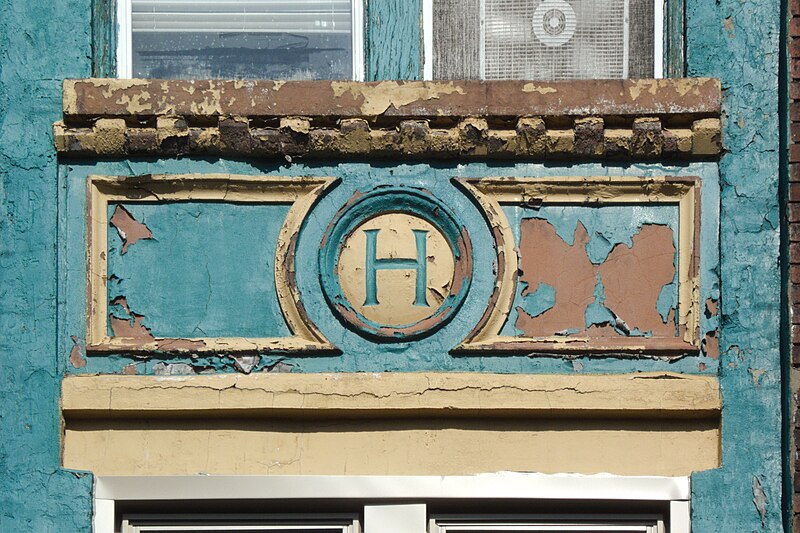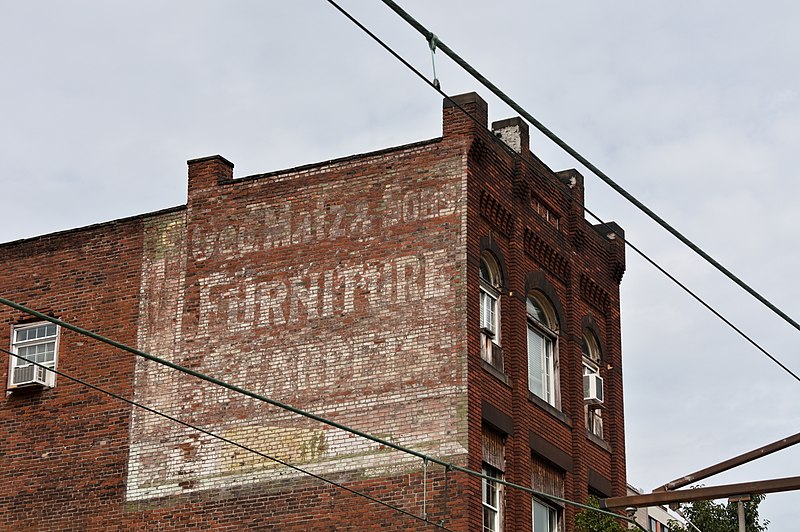
Sharpsburg has a paucity of street names and has to double up on many of them. At the western end of the borough, Main Street splits into two Main Streets. On South Main Street we find two similar hotels from the 1890s, both in the kind of German classical-Romanesque hybrid style that old Pa Pitt has learned to call Rundbogenstil. “Hotel” meant “neighborhood bar with rooms for rent”; such hotels popped up in neighborhoods everywhere in our area, because it was much easier to get a liquor license for a hotel than for a bar.
First, the Lafayette Hotel (probably not its original name), which not only still has a lively and beloved bar on the ground floor, but even still has rooms for rent.


The date stone: built in 1896.

This probably tells us the initial of the original name of the hotel.

An oval stained-glass window.
A block away, we have the Sharpsburger Hotel, now apartments.


Built in 1893.

A bit of Romanesque carved foliage and a street sign that probably dates from the 1890s. Old Pa Pitt is collecting old street signs on the sides of buildings, by the way, which was the usual place for them in the 1800s. Both these hotels retain their corner signs.








